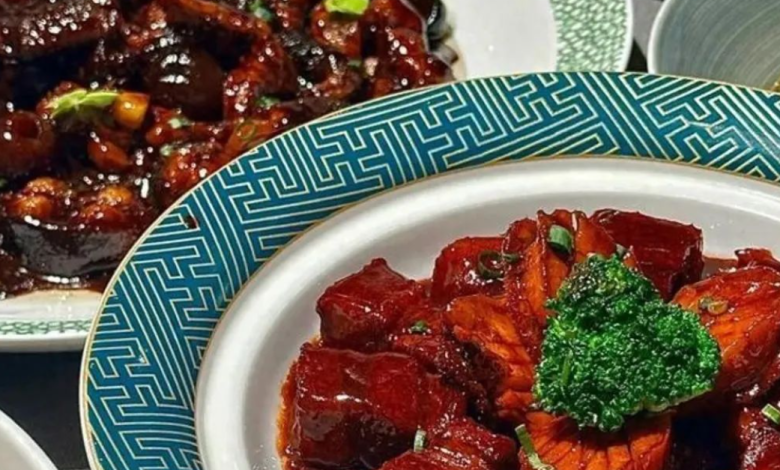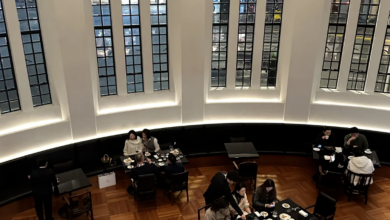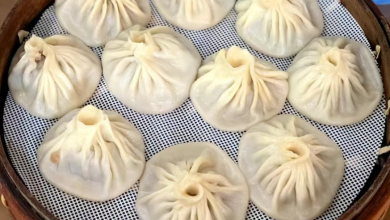Wang’s Shanghai Cuisine: A Legacy of Authentic Flavors

In the heart of Shanghai, where tradition and modernity collide, Wang’s Shanghai Cuisine stands as a culinary beacon, preserving the rich heritage of Shanghainese flavors while adapting to contemporary tastes. This family-run restaurant, now in its third generation, has become synonymous with authentic, home-style cooking—a place where every dish tells a story of the city’s past and present.
A Family Legacy
Founded in the 1950s by Wang Zhonglin, a former chef for a prominent Shanghai household, the restaurant began as a modest eatery serving classic Shanghainese comfort food. Over the decades, it evolved into a beloved institution, thanks to its unwavering commitment to traditional techniques and quality ingredients. Today, Wang’s is run by his granddaughter, Wang Lili, who balances reverence for the past with subtle innovations to keep the menu fresh and exciting.
The Essence of Shanghainese Cuisine
Shanghai’s culinary identity is defined by its sweet and savory balance, meticulous preparation, and emphasis on seasonal produce. At Wang’s, these principles shine through in every dish:
- Hong Shao Rou (Braised Pork Belly)
The crown jewel of Shanghainese cuisine, Wang’s version is a masterclass in texture and flavor. The pork belly is slow-braised in soy sauce, rice wine, and rock sugar until it achieves a melt-in-your-mouth tenderness, with a glossy, caramelized exterior. Served with steamed buns, it’s a dish that epitomizes Shanghainese indulgence. - Xiao Long Bao (Soup Dumplings)
While many restaurants claim to serve the best xiao long bao, Wang’s stands out for its delicate, paper-thin skins and rich, aromatic broth. Each dumpling is meticulously pleated by hand, ensuring the perfect ratio of filling to soup. - Drunken Chicken
A cold appetizer that showcases the Shanghainese love for wine-infused flavors. Tender poached chicken is marinated in Shaoxing wine, resulting in a fragrant, slightly sweet dish that’s refreshing yet deeply flavorful. - Stir-Fried River Shrimp
A seasonal delicacy, these succulent freshwater shrimp are quickly stir-fried with green tea leaves, offering a subtle bitterness that complements their natural sweetness.
A Modern Twist on Tradition
While Wang’s remains rooted in tradition, it has also embraced subtle modernizations to cater to evolving palates. For example:
- Vegetarian Adaptations: Classic dishes like lion’s head meatballs are reimagined with mushrooms and tofu for plant-based diners.
- Lighter Preparations: Reducing oil and sugar in certain dishes to appeal to health-conscious guests without sacrificing flavor.
The Dining Experience
Stepping into Wang’s is like entering a Shanghai home from the mid-20th century. The décor features dark wood furniture, vintage posters, and soft lighting, creating an atmosphere that’s both nostalgic and inviting. The staff, many of whom have worked there for decades, treat regulars like family, remembering their favorite orders and preferences.
Why Locals Love It
- Consistency: Regulars return for the unchanged taste of childhood memories.
- Affordability: Despite its reputation, Wang’s remains reasonably priced, with most dishes under ¥100 (~$15).
- Seasonal Specials: The menu rotates to highlight ingredients at their peak, like hairy crab in autumn or bamboo shoots in spring.
A Cultural Landmark
Beyond food, Wang’s serves as a living archive of Shanghai’s culinary history. Old photographs and newspaper clippings line the walls, documenting the restaurant’s journey alongside the city’s transformation. For many Shanghainese, a meal here isn’t just about eating—it’s about reconnecting with their roots.
Tips for Visitors
- Must-Try: The “Wang’s Feast” set menu offers a curated introduction to Shanghainese classics.
- Timing: Visit during off-peak hours (e.g., late afternoon) to avoid crowds.
- Pairings: Order a pot of biluochun tea to cut through the richness of braised dishes.
Conclusion
In a city racing toward the future, Wang’s Shanghai Cuisine remains a steadfast guardian of tradition. It’s a place where recipes passed down through generations share the table with modern diners, where every bite carries the weight of history and the warmth of home. As Wang Lili often says: “Our food isn’t just meant to be eaten—it’s meant to be remembered.”
Final Thought:
“Shanghai’s soul is in its flavors, and at Wang’s, those flavors are served with love.”





